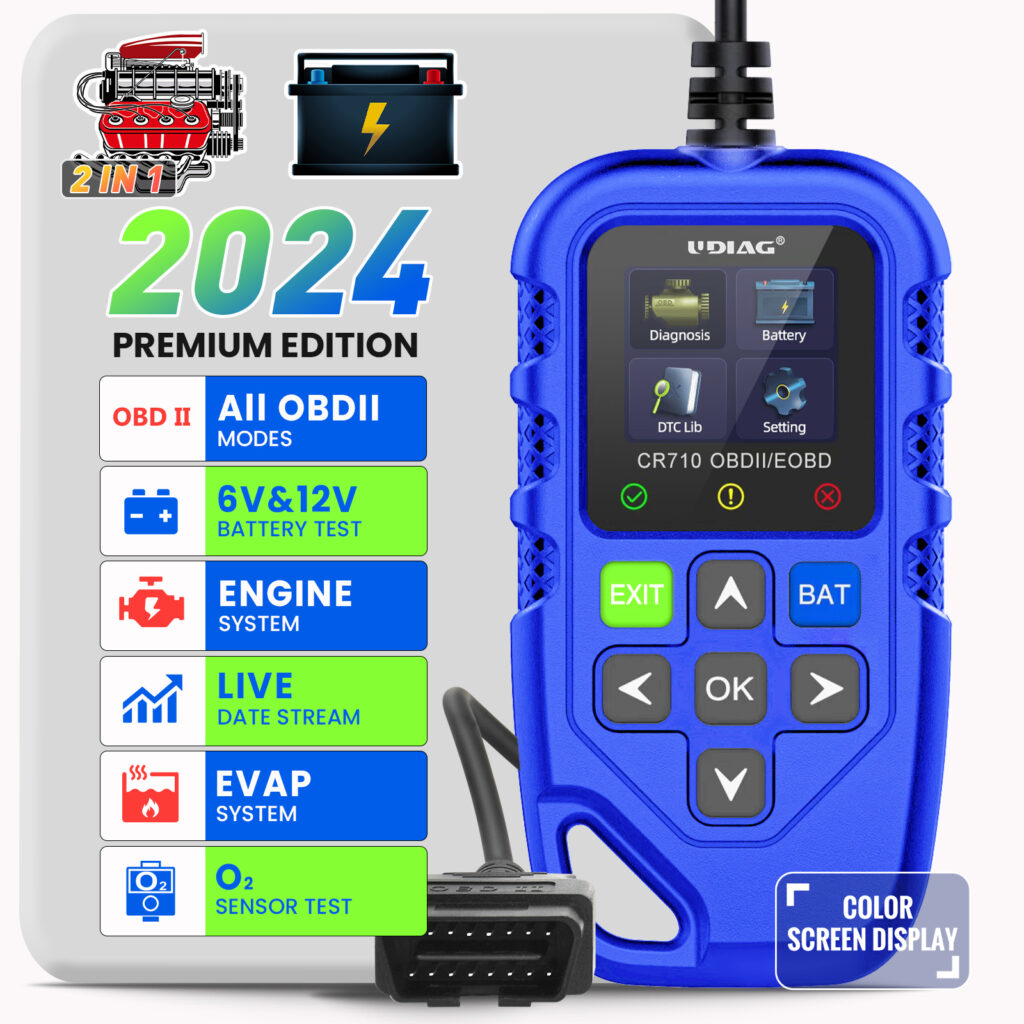How do OBDII Code Readers work, and what basic functions do they perform?
2024-05-23 by UDIAG
On-Board Diagnostics II (OBDII) code readers are essential tools for vehicle diagnostics, enabling both professionals and DIY enthusiasts to monitor and troubleshoot vehicle performance. These devices interface with a car’s computer system to provide critical data about its operation, helping identify and solve potential issues. This essay explores how OBDII code readers work and their basic functions, highlighting their significance in vehicle maintenance and diagnostics.

I. Background on OBDII
A. History and Evolution
The journey of On-Board Diagnostics (OBD) began with OBDI, introduced in the 1980s, offering limited diagnostic capabilities. However, the need for a more comprehensive system led to the development of OBDII in the mid-1990s. OBDII provided standardized diagnostic trouble codes (DTCs) and a universal connector, significantly enhancing the diagnostic process.
B. Standardization and Regulations
OBDII standardization became mandatory for all vehicles sold in the United States from 1996 onwards, driven by regulations to control emissions and improve vehicle performance. Similar regulations were adopted globally, ensuring that OBDII systems became a universal standard, facilitating easier diagnostics and repairs.
III. How OBDII Code Readers Work
A. Components and Connection
An OBDII code reader comprises a connector, a display unit, and an interface for communication with the vehicle’s ECU (Engine Control Unit). The OBDII port, typically located under the dashboard, allows easy access. Code readers range from basic handheld devices to sophisticated Bluetooth adapters and smartphone apps, catering to various user needs.
B. Communication Protocols
OBDII systems use several communication protocols, including ISO 9141, CAN (Controller Area Network), and SAE J1850, among others. These protocols ensure seamless communication between the code reader and the vehicle’s ECU, enabling accurate data retrieval and diagnostics.
C. Data Retrieval and Processing
When connected to the vehicle, the OBDII code reader accesses the ECU to retrieve DTCs and sensor data. It decodes this information, presenting it in an understandable format. This process involves reading data from various sensors and modules, allowing the user to pinpoint issues affecting the vehicle’s performance.
IV. Basic Functions of OBDII Code Readers
A. Reading Diagnostic Trouble Codes (DTCs)
One of the primary functions of OBDII code readers is to read DTCs. These codes, which can be generic or manufacturer-specific, indicate issues within the vehicle’s systems. The reader displays these codes, often accompanied by descriptions, helping users understand the nature of the problem.
B. Clearing Codes and Resetting the Check Engine Light
OBDII code readers allow users to clear stored DTCs, which in turn resets the Check Engine Light. While this function is useful for troubleshooting, it’s essential to address the underlying issues to prevent further problems.
C. Live Data Monitoring
Live data monitoring enables real-time streaming of data from various sensors, such as engine RPM, vehicle speed, and O2 sensor readings. This function is crucial for diagnosing intermittent issues and assessing the vehicle’s performance under different conditions.
D. Emission Readiness Tests
OBDII code readers perform emission readiness tests, checking if the vehicle meets emission standards. This function is vital for passing mandatory vehicle inspections and ensuring compliance with environmental regulations.
E. Additional Functions in Advanced Readers
Advanced OBDII code readers offer additional functionalities, such as diagnostics for ABS (Anti-lock Braking System), SRS (Supplemental Restraint System), and battery testing. These readers can also receive software updates, ensuring compatibility with newer vehicle models.
V. Practical Applications and Benefits
A. For Vehicle Owners
OBDII code readers empower vehicle owners to perform DIY diagnostics and maintenance, saving costs on repairs and enhancing their understanding of their vehicle’s health.
B. For Professional Mechanics
For professional mechanics, OBDII code readers are indispensable tools that enhance diagnostic capabilities, making troubleshooting and repairs more efficient and accurate.
C. For Regulatory Compliance
OBDII systems ensure vehicles meet emission standards, playing a crucial role in mandatory vehicle inspections and regulatory compliance, thereby contributing to environmental protection.
Conclusion
OBDII code readers are vital tools in modern vehicle diagnostics, offering a range of functions from reading DTCs to performing emission readiness tests. Their role in maintaining vehicle health, saving costs on repairs, and ensuring regulatory compliance underscores their significance. As vehicle technology evolves, advancements in OBD systems and diagnostic tools will continue to enhance their capabilities, further simplifying vehicle maintenance and diagnostics.
Get Access Now: https://www.udiagtech.com
FAQs
1. What is an OBDII code reader?
An OBDII code reader is a diagnostic tool used to interface with a vehicle’s On-Board Diagnostics II (OBDII) system. It retrieves and displays diagnostic trouble codes (DTCs) and other data from the vehicle’s engine control unit (ECU), helping diagnose and troubleshoot issues.
2. Where is the OBDII port located in my vehicle?
The OBDII port is typically located under the dashboard, near the steering column. It is usually within easy reach for convenient access and is standardized in all vehicles manufactured after 1996.
3. What are Diagnostic Trouble Codes (DTCs)?
DTCs are codes generated by the vehicle’s ECU when it detects a problem in the vehicle’s systems. These codes help identify specific issues and can be read by an OBDII code reader. They can be generic or manufacturer-specific.
4. Can I use an OBDII code reader on any vehicle?
OBDII code readers are designed to work with all vehicles manufactured after 1996 in the United States, as well as most modern vehicles worldwide. However, compatibility may vary for older or non-standard vehicles.
5. What types of data can an OBDII code reader retrieve?
An OBDII code reader can retrieve various types of data, including DTCs, live sensor data (such as engine RPM, vehicle speed, and O2 sensor readings), freeze frame data, and emission readiness status.
6. How do I clear a Check Engine Light using an OBDII code reader?
To clear a Check Engine Light, connect the OBDII code reader to the vehicle’s OBDII port, read the DTCs, and use the reader’s function to clear the codes. This will reset the Check Engine Light. However, if the underlying issue is not resolved, the light may come back on.


